Welcoming a new kitten into your home is the best thing ever, but it can be super stressful making sure you’ve got everything you need, especially if you’re a first-time owner. To help you out, we’ve made this new kitten checklist filled with everything you need to safely settle your kitty into their new home.
In this comprehensive guide, we’ve got everything covered to help your little companion thrive. Let’s dive into creating a loving, nurturing environment for your new kitten. Let’s get started.
Coming Up…
- Basic Supplies
- Smart Supplies
- Vet Checklist for New Kittens
- Medical Checklist
- Kitten Proofing Your Home
- Your Kitten With Other Pets
- Kitten Breeder Requirements
- Extra Tips for First Time Cat Owners
- FAQs
Basic supplies
Let’s take a look at the basic cat supplies you will need for your new kitten & some top tips about how best to use them.
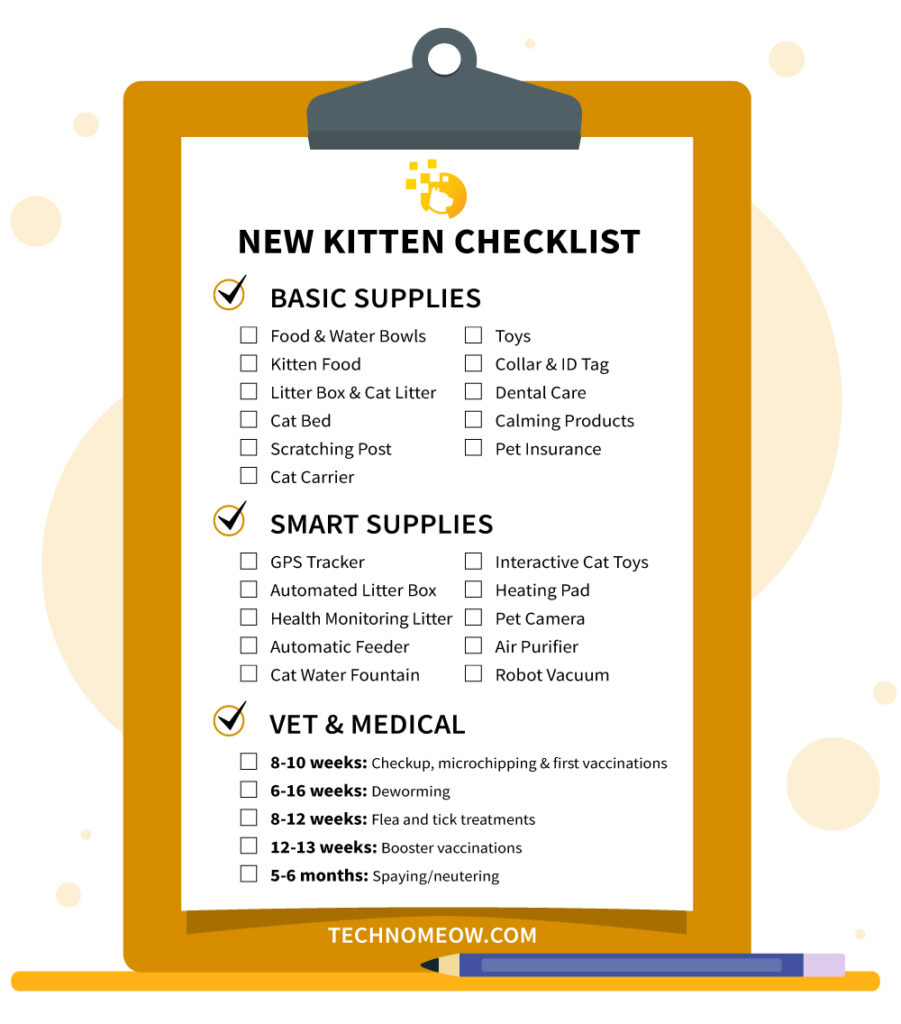
Food & water bowls
New kittens need shallow, non-skid dishes and mess proof non-tip bowls that are appropriately sized and easy for them to comfortably eat and drink from.

Top tip: Your cat’s feeding station should live somewhere calm & accessible in the home and each cat should have their own food bowl.
Kitten food
Kittens need nutritionally complete & balanced foods made for their age group with all of the essential nutrients they need to grow and develop.
We recommend high-quality foods made from natural ingredients that are high in protein & moisture and low in fat & carbs, with no fillers or artificial additives.
Our Top Kitten Food Picks
Wet kitten food is formulated for kittens up to 12 months old; keeping her on this formula until she reaches 12 months of age helps set up a healthy foundation for life. Made with the optimal ratio of protein, fats, and carbohydrates to meet the nutritional needs of a maturing kitten’s playful energy.
Made in the USA with some of the world’s finest ingredients. Grain-free chicken recipe. Trace amounts of grain may be present due to cross contact during manufacturing.
Crafted in the USA, where the food undergoes regular quality and safety checks. Canned cat food pate with high protein content is made specifically for kittens. Real, high-quality ingredients like ocean whitefish, turkey, chicken, or salmon deliver complete and balanced nutrition for your growing kitten.
BLUE for Cats is now BLUE Tastefuls, with a new look and the same tasty recipe. Made with tasty real chicken as the first ingredient. Designed to support the needs of growing kittens with DHA, ARA and taurine for brain, eye and heart health.
Real farm-raised chicken helps create a high protein dry kitten food that supports a kitten's development of lean muscles as she jumps and plays. DHA supports brain and vision development, and essential nutrients like those found in mother's milk are included to help your kitten grow healthy and strong.
Litter box & cat litter
You should buy your new kitten a low-sided litter box that is easy to enter and exit. It should be at least one and a half the length of their body with room to dig. Every cat has litter preferences, but as young kittens explore with their mouths, we recommend a course-grained natural non-clumping litter like the PetSafe ScoopFree Premium Natural Litter, which is less likely to cause problems if swallowed.
Your cat’s litter box should be placed somewhere private within the home and we recommend getting two litter boxes per kitten. Start with a small one and adjust as they grow. Scoop daily, and wash it thoroughly at least once per month.

Top tip: To train your kitten to use the litter box, start by placing them in it after their meals and whenever they wake up from a nap. Always reward them afterward!
Comfortable bed
Cats cherish their nap times, so a snug bed will surely be welcomed. A dedicated bed not only offers them a cozy retreat for rest and relaxation but also helps in setting boundaries and routines, ensuring they feel safe and loved in their forever home

Top tip: Place your kitten’s bed somewhere peaceful and quiet and make sure you have one for each cat in your home.
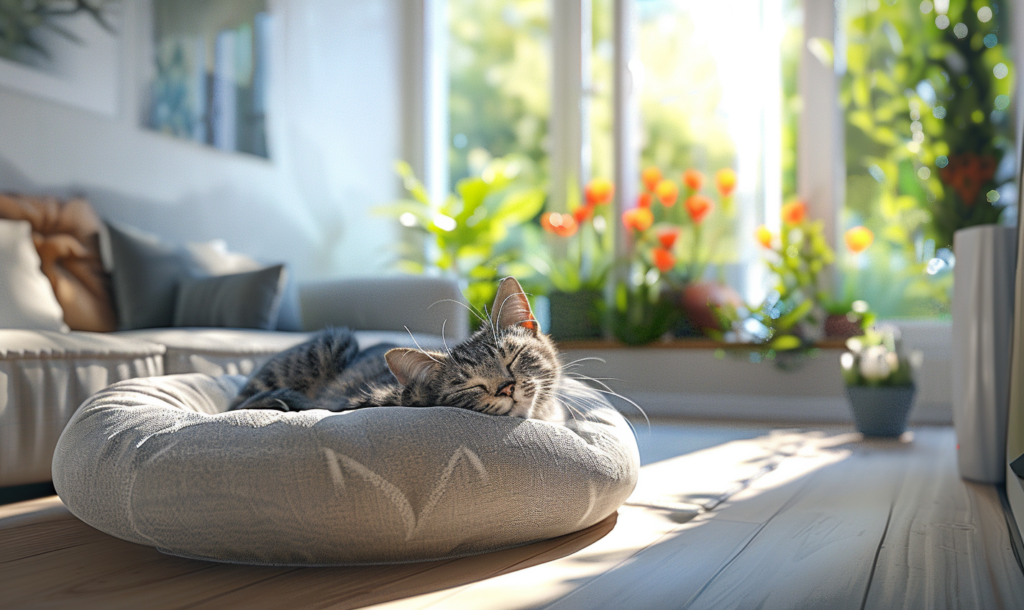
Scratching post
Scratching posts are essential, especially for young kittens who are excited to explore the new world around them. Scratching is a totally normal and natural instinct, so save your home and get a scratching post!
When choosing a scratching post for your cat, look for durability and stability to withstand vigorous use. It’s also important to choose a post that’s tall enough for your cat to fully stretch their body while scratching. We like this simple yet durable SmartCat scratching post.

Top tip: Although every cat is different, sisal tends to be the favored texture!
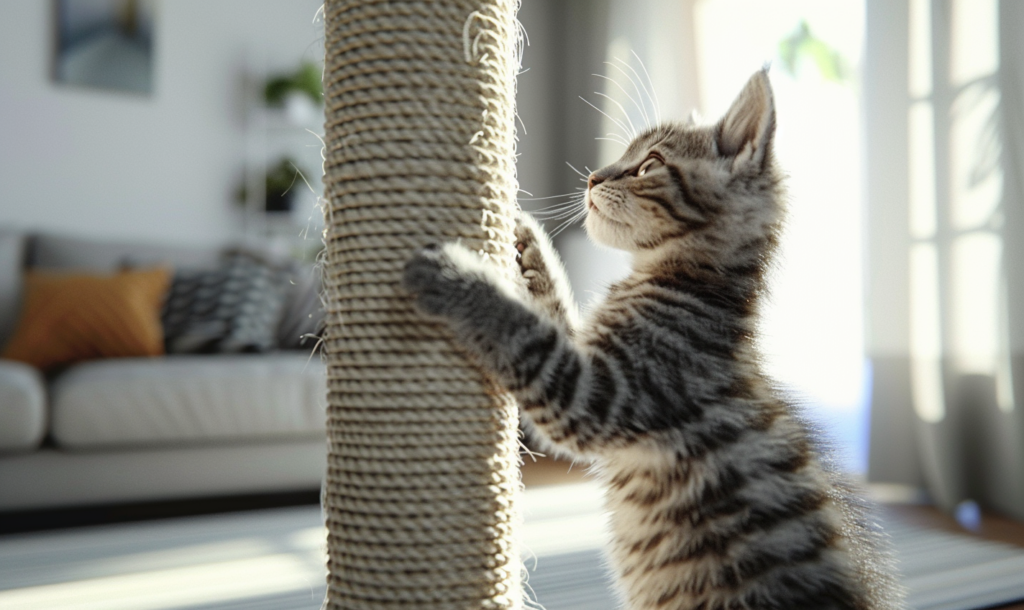
Cat carrier
You’ll also need a secure carrier for trips to the vet or other outings. It’s also a great way to help your kitty to feel more at ease with new adventures, making all your journeys together smoother and more enjoyable for you both! Make sure it’s comfortable and appropriately sized.
Choosing a carrier that opens from both the side and the top is a clever idea, too. It makes getting to your kitten a breeze, helping to keep their stress levels low during those times they need to come out or go in. The PetSafe Happy Ride Backpack Carrier is one of our faves for the range of options it gives us.
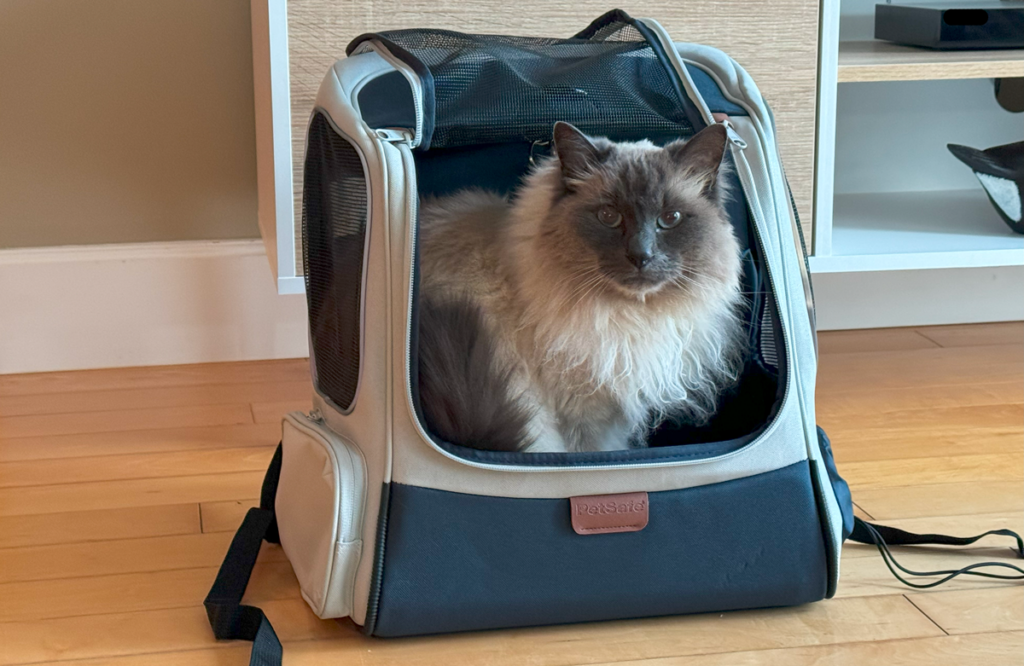

Top tip: To lessen stress, leave your carrier open when you first get it and allow your cat to get comfortable with it before you carry them in it.
Toys
Toys are not just for dogs! All pets need to play and have fun. Mental stimulation is essential for your cat’s well-being and to prevent stress and boredom, so invest in some good toys for your kitten.
We suggest balls, feather wands, plush mice, interactive feeders & puzzles, catnip toys, laser pointers, motion-activated toys, climbing posts, activity centers, and cat exercise wheels.

Top tip: CAUTION! Avoid letting your kitten or cat play with items like yarn, thread, rubber bands, corks, hair ties, or wire twist ties. These objects can easily be swallowed and pose significant risks to your pet’s health.
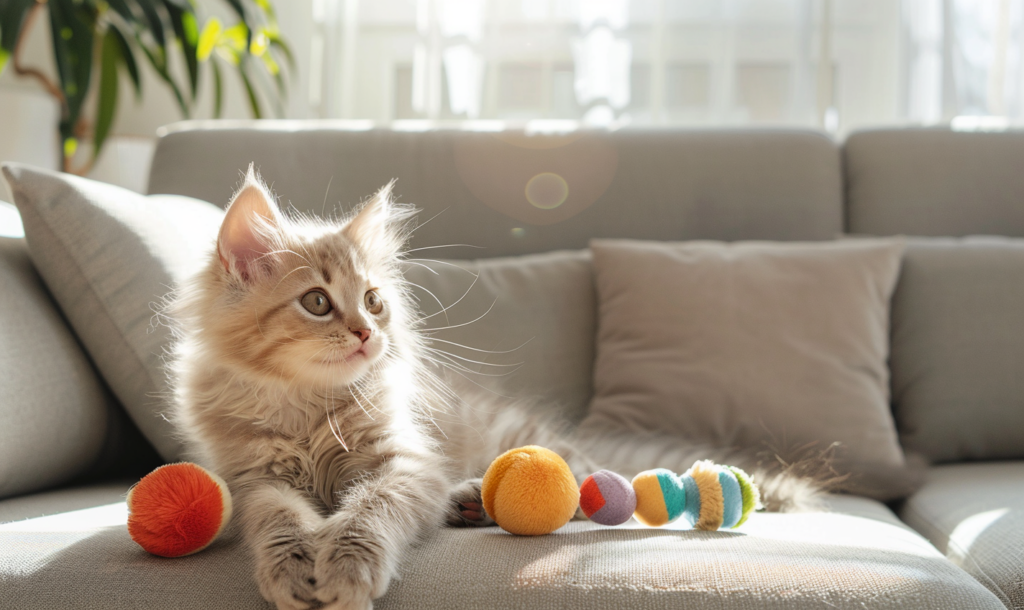
Collar & ID tag
This one is super important, be sure to get your new kitty a comfy collar and ID tag with all of your contact info, especially if they’re going to be going outdoors.

Top tip: We recommend putting your phone number & address on your cat’s ID tag, as well as any crucial information about them, such as being an indoor.
Toothbrush & toothpaste
Most vets recommend brushing your pet’s teeth to keep their dental health in check. Be sure to use a toothbrush and toothpaste made for cats, as human toothpaste contains Xylitol, which is highly toxic to cats.
Another great option for providing your cat with great oral hygiene are Teeth Cleaning Wipes that help to remove bad breath, plaque and tartar buildup.

Top tip: If you’re going to brush your kitten’s teeth, you should start early on to get them used to it.
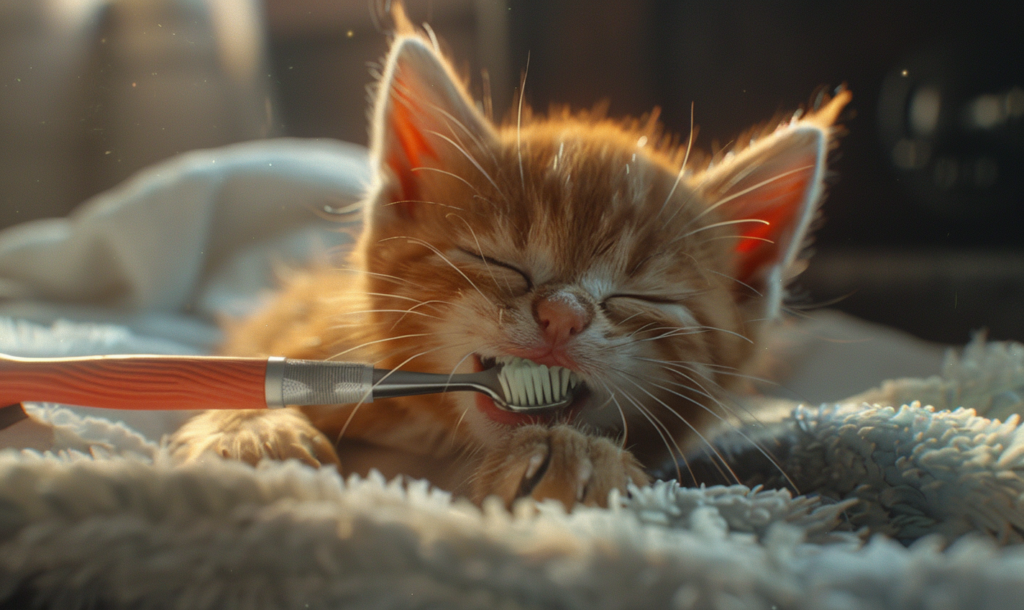
Calming products
To help your kitten transition into their new life, consider using an anti-anxiety product like a plug-in diffuser or room spray to help them settle in. These products use natural soothers like lavender to calm their nerves and are especially useful for kittens coming from rescue shelters.
Check out or top picks for Cat Calming Collars here.

Top tip: Buy one made specifically for cats!
Pet insurance
Finally, getting pet insurance for your new kitten is a smart move that brings a lot of peace of mind. It’s like having a safety net for those just-in-case moments, covering everything from regular vet visits to unexpected emergencies.
Starting a policy early on not only helps keep costs down but also means you’re more likely to be covered for just about anything, since pre-existing conditions won’t be an issue if they haven’t popped up yet. This way, you can focus on enjoying all the cuddles and playtime with your new furry friend, knowing you’re all set for whatever comes your way. PetAssure is a great option if you’re looking for a reliable and affordable plan.

Top tip: Price comparison sites are a great tool to find the best insurance deals

Smart Supplies
If you prefer smart supplies, these are your must-haves!
Smart collar with GPS trackers
Smart collars do the job of regular collars but with the added bonus of being able to track your kitten’s location and monitor their activity. Some even allow you to record your cat’s adventures on camera, call them home, and more!
Automated litter boxes
Once your kitten weighs over 3 pounds or more, automated litter boxes are a great option to scoop the poop for you to save you time and eliminate a gross chore from your to-do list. However, it’s important to keep an eye on your kitten’s poop, as changes in poop can indicate health problems.
If you’ve seen any of our automated litter box reviews, you’ve likely read about how much we love the Litter Robot 4. We can’t recommend it enough!
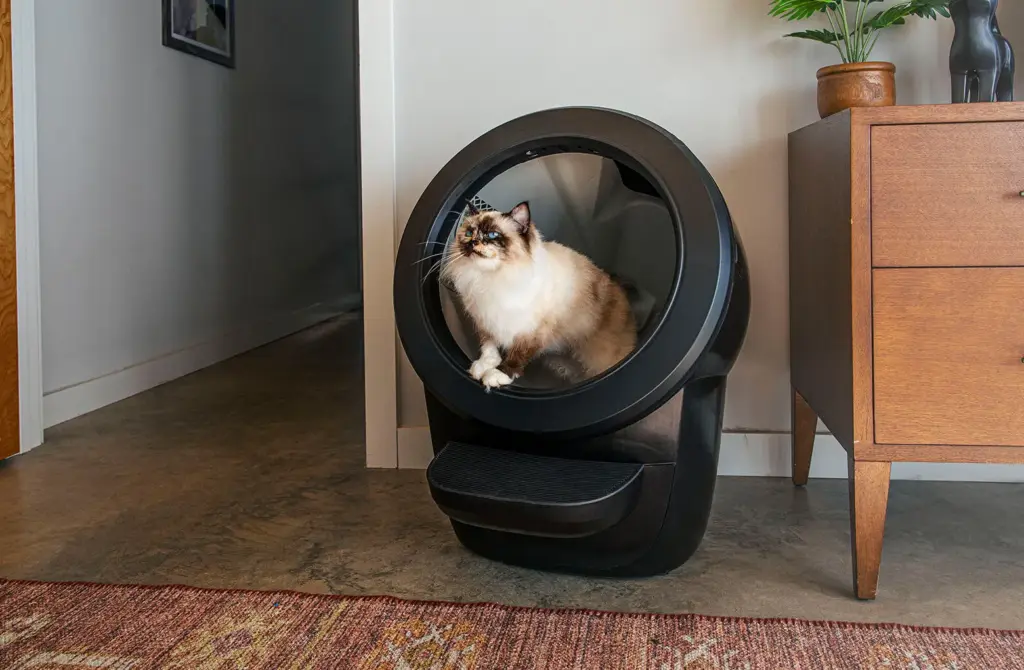
Health-monitoring cat litter
Whilst we’re on the subject of smart litter boxes, why not try smart cat litter? Health-monitoring cat litters change color when it gets peed on according to PH levels, which can help you monitor your cat’s health.
Automatic feeder
If you lead a busy life, an automatic feeder will make sure your cat gets fed, even when you’re not at home or just a bit forgetful. We’re especially fond of the Feeder-Robot, an automatic pet feeder that enables you to establish portion-controlled feeding schedules directly from the app or the device itself.
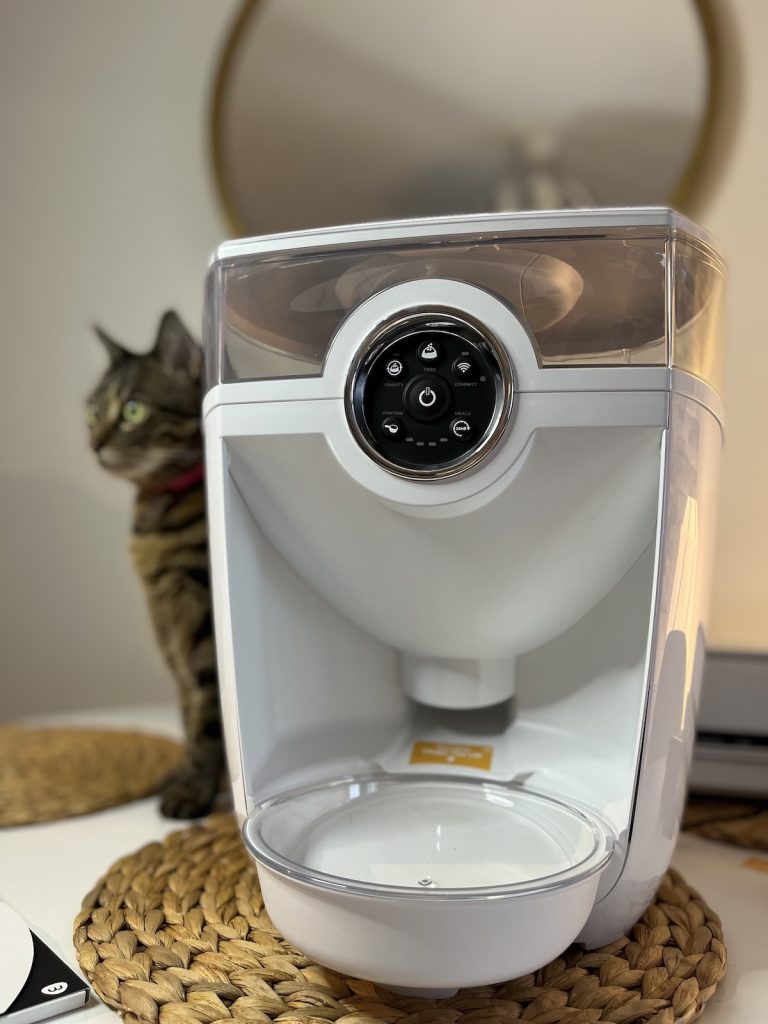
Cat water fountains
Cat water fountains are awesome devices that create a fun flow of water to entice cats to drink more – as they are famously bad drinkers!
We’re impressed with the PetSafe Outlast Water Fountain, a cordless and rechargeable hydration solution boasting 130 days of battery life and whisper-quiet operation, ensuring your pet stays hydrated without the noise or hassle of cords.
Interactive cat toys
As mentioned above, play is essential for your cat’s well-being, and interactive cat toys like lasers and motion-activated toys stimulate the mind even more than regular ones, which is especially important if your cat is a brain box.
Heated cat bed or heating pad
Heated cat beds and healing pads provide warmth in colder seasons, which is super important for vulnerable little kittens, especially if you live in a cold climate.
Pet cameras
Pet cameras are an awesome way to keep an eye on your new kitten when you’re out of the house, especially those with two-way audio so that you can talk to your cat when you’re not there.
Air purifier
If you or somebody in your home is sensitive to cat hair, an air purifier is a must to reduce dander from the air and make the atmosphere less allergenic.
Robot vacuum
Even if you don’t have allergies to pet hair, young kittens can shed a lot as they grow to make room for their adult coat, so it’s wise to invest in a good vacuum to keep your home clean. A robot vacuum does the work for you, and if you are allergic or sensitive to pet hair, it helps massively with symptoms.
Vet Checklist
The crucial vet visits for your new kitten by age:
- 8-10 weeks: Initial checkup, microchipping & primary course of vaccinations
- 12-13 weeks: Booster vaccinations
- 16 weeks: Booster vaccinations (vet dependent, sometimes the first two are enough)
- 5-6 Months: Spaying/neutering
- Annual check-ups & booster vaccinations starting at 1 year
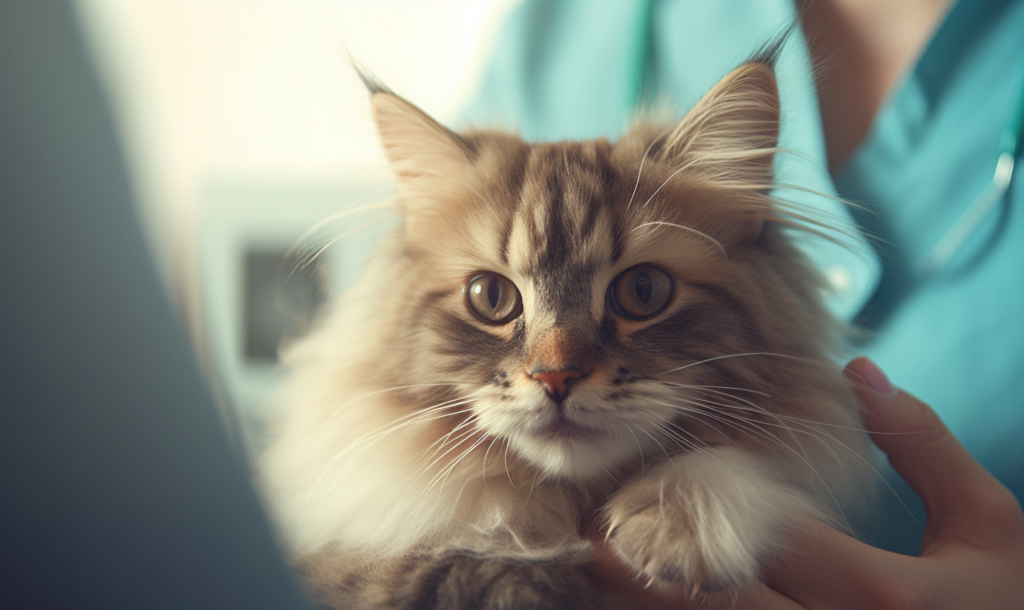
Medical checklist
- Vaccinations – from 8-10 weeks
- Microchipping – from 8 weeks
- Deworming – from every 2 weeks from 6 – 16 weeks old
- Flea & tick treatments – from 8-12 weeks
- Spaying/neutering – from 5-6 months
RELATED: Cat Poop Explained: What’s Normal and What’s Not

Top tip: Online Pet Pharmacies are a great option if you’re in need of any pet medicine for your new kitten.
Kitten-Proofing Your Home
Kitten-proofing your home is crucial to ensure the safety of your new kitty. Follow this list to keep your kitten safe!
- Secure hazards – cover electrical outlets & secure loose cords
- Remove toxic plants
- Put toxic foods, drinks, cosmetics, & cleaning supplies in secure draws/cupboards
- Secure furniture that may tip
- Keep small objects that can be choked on or swallowed out of reach
- Be mindful of kitchen appliances – cover knobs & switch things off at the wall
- Close toilet lids
- Secure windows & garbage cans
- Close doors to any dangerous rooms
- Put chewable belongings like shoes somewhere safe
- Always check laundry machines & dryers before using
- Never leave a young kitten unsupervised in the kitchen
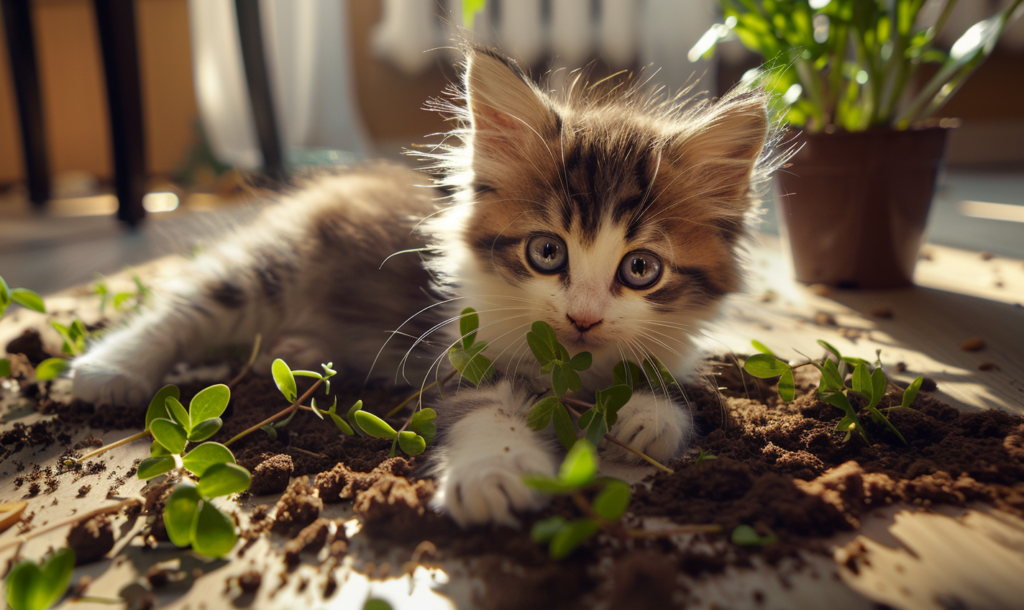
New Kittens With Other Pets
How to introduce a new kitten to a home with other pets.
If you have other cats
Introducing a new kitten to a household with existing cats should be done gradually to minimize stress and ensure a smooth transition. Keep them in separate rooms at first to allow the other cats to get familiar with the new scent. Swap their bedding or toys around and use lots of positive reinforcement.
Then, use a baby gate or cracked door to introduce them so they can observe each other from a distance. Monitor their reactions closely, if they react well, let them get closer over several days until they are used to each other. If there is tension or hostility, go back a step, and consider using pheromone diffusers or sprays to calm the environment.
If you have dogs
Introducing your new kitten to a household of dogs is slightly different. If the dogs already live with cats it will be easier, but if this is their first feline sibling, you’ll need to familiarize them with the scent of the kitten as above and introduce them to the kitten in a secure carrier so that they can see and sniff each other.
Separate them if there are any signs of aggression and go back a step, be sure to use lots of positive association with their scent. Redirect their attention if they’re overexcited and reward calm behavior. Then, put your dog on a leash and let the kitten out of the carrier to see how they behave when they’re both hanging out in the same space.
Gradually increase the length of the interactions over several days until they are used to each other and prioritize the safety of the animals above all else.
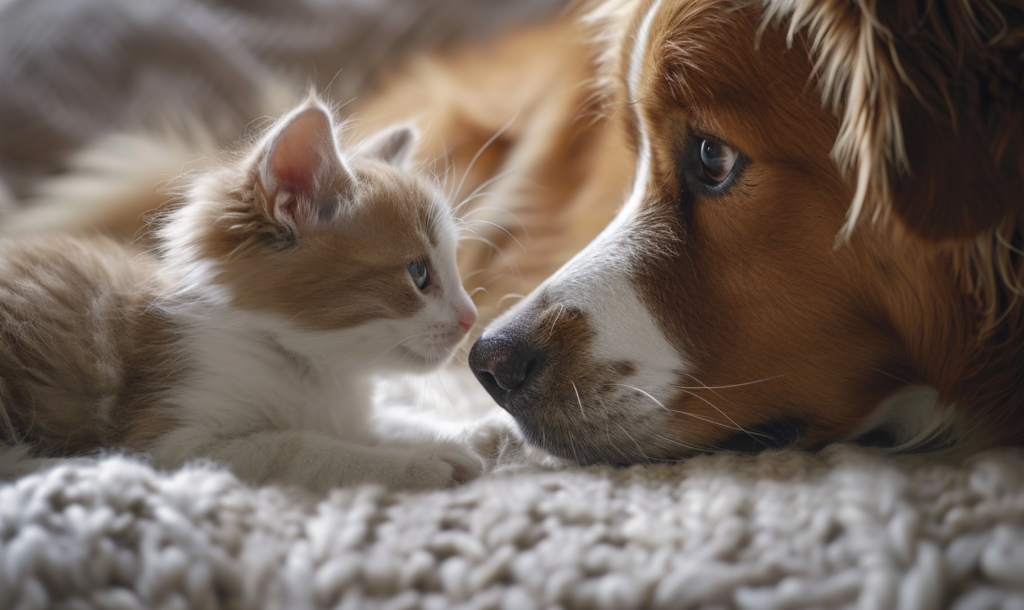
Kitten Breeder Requirements
If you’re getting your new kitten from a breeder, you need to make sure they are legal & reputable. Laws vary by state, but many states require commercial cat breeders to have a license. Many cruel backyard breeders pose as hobby breeders online, so ask to visit the kittens in person and ask for photos and updates.
Good breeders will also keep the kittens with their mother & litter until they’re at least 8-10 weeks old. Kittens from reputable breeders should come with pedigree documentation (if applicable) and health documentation that confirms their parents were tested for hereditary conditions, as well as being dewormed and vaccinated (if age-appropriate).
It’s also a good idea to ask for a guarantee so that if your kitten gets sick with something they were meant to be protected against, you can ask the breeder to help with your vet bills.
If you’re in search of a pedigreed kitten, it’s crucial to connect with a responsible and well-informed breeder. Turn to trusted sources like The Cat Fanciers’ Association or The International Cat Association for guidance.
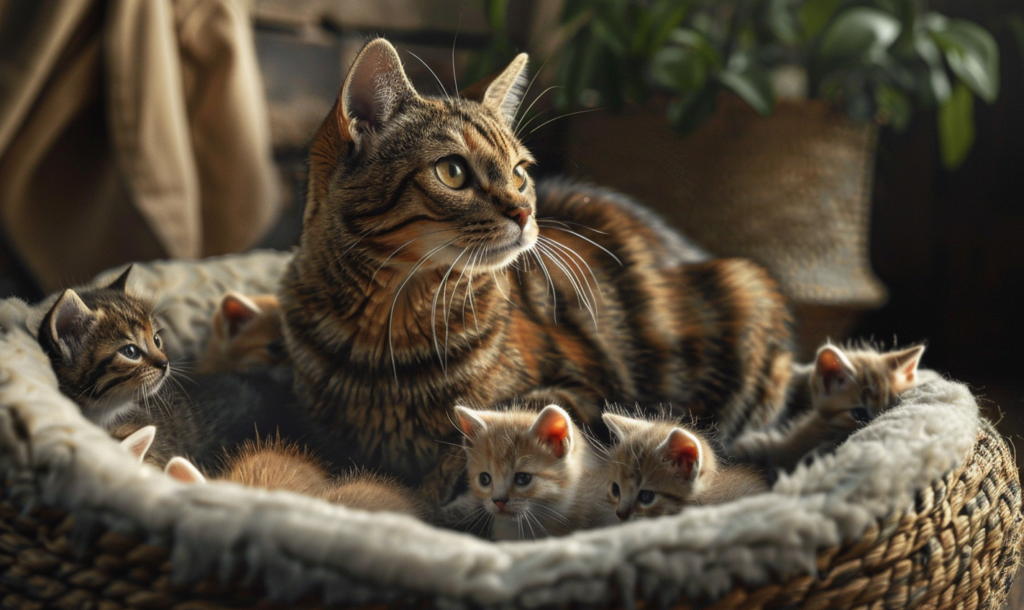
Extra Tips For First-Time Owners
We’ve already covered some great top tips in the sections above, but here are a few more for first-time cat owners.
Routine
Getting your kitten into a good routine will help to settle them in and make life easier for you both. If they eat at the same time every day, they poop around the same time every day… You get the picture!
Bedtime
It’s a good idea to crate your new kitten whilst you sleep until it’s safe to let them do their own thing at night, or at least confine them to a safe room. If you use a crate, make sure it’s safe, secure, comfy, and roomy, with something cozy to snuggle up to.
Training
Training your kitten to start doing something or getting used to something new should start as early as possible. Be consistent, have patience, and never punish your kitten for getting it wrong. Positive reinforcement is key!
It’s best and start with the basics, such as teaching your kitten their name and using the litter box. If you want your cat to be a genius, you can teach them more advanced stuff later but don’t overdo it. Research shows that short training sessions once or twice a week work best.
Socialization
If your kitten is going to be an outdoor cat, they will learn to socialize naturally with other cats. To socialize them with humans, do it at home and start early, with gentle petting, handling, and talking.
Bonding
Bonding with your new kitten can take time. Just be patient and don’t stress out too much. As long as you meet their needs and take the time to play and give them affection, you will bond naturally.
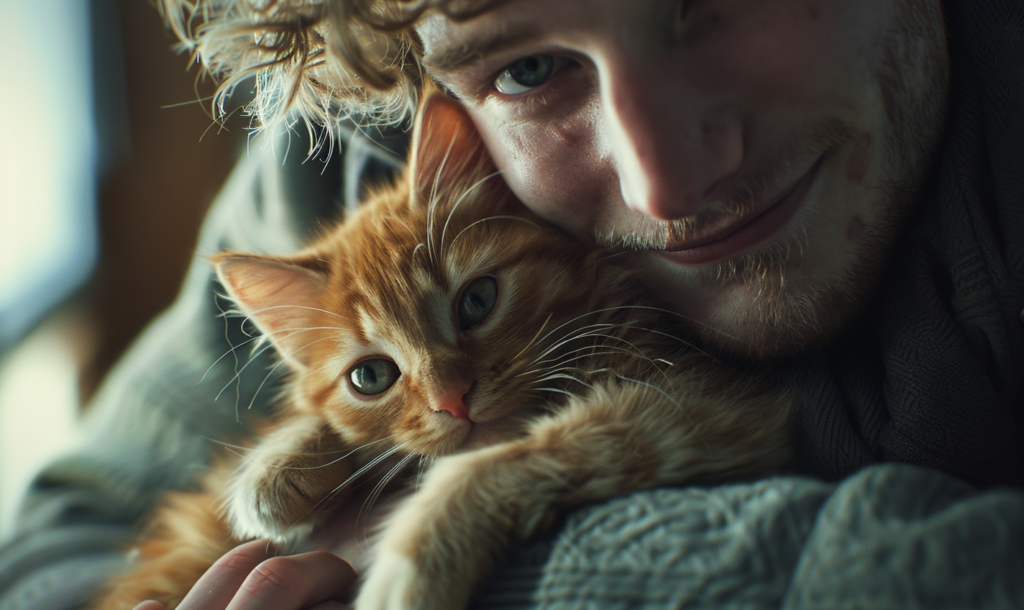
Common problems
Problems to watch out for in new kittens are respiratory issues, digestive problems, fleas, and parasites. You should deworm your kitten every 2 weeks from 6 – 16 weeks old and flea them monthly from 8-12 weeks.
Some digestive issues are normal due to diet transition & stress, but severe persistent issues should be checked out by a vet. Contagious conditions that cause respiratory symptoms are also common in young kittens due to being in close proximity to other young kittens and must be treated by a vet.
FAQs
When can I leave my kitten alone?
You can leave a kitten alone after 8 weeks of age for 4-6 hours, so long as they are contained in a safe part of the home and have access to the things they need.
How long can I leave my kitten alone?
Kittens between 2-4 months old should only be left alone for four to six hours at a time. When they’re around six months old, you can be gone all day, but the less time you’re gone, the better!
Can you leave kittens alone overnight?
You cannot leave a young kitten alone overnight. Once they are more independent, you can, so long as they have access to their bed, litterbox, and water, and you have an automatic feeder or somebody to come around and feed them.
How do you leave a kitten home alone?
You don’t need to crate kittens when you leave the house unless they’re a newborn, likely to injure themselves, or especially destructive and undergoing training. You do, however, need to make sure your home is kitten-proof and safe.
When can I let my kitten go outside?
Your kitten can go outside once they are familiar with your home and fully vaccinated, but we recommend waiting until they are also spayed or neutered at 4-6 months.
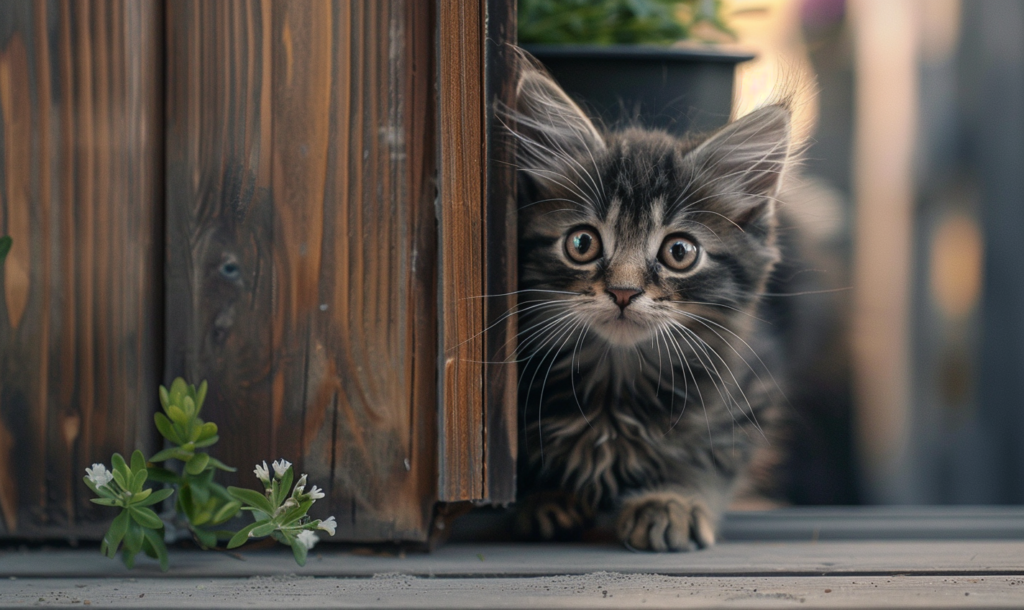
Is it necessary to microchip my kitten?
Whilst it’s not currently a legal requirement, we strongly recommend microchipping your cats just in case they get lost or go missing.
When can I groom my kitten?
Not all cats need grooming, but those that do should start being groomed when they’re under 6 months old to get them used to it.
By following our new cat owner checklist, you’ll be well-prepared for your new arrival. Remember, every cat is different, so adapt our top tips as necessary, and enjoy your time with your new kitten!
Conclusion
We’re excited for you to start this amazing journey with your new kitten! We’ve covered everything you need to know to make your furry friend’s transition into their new home as smooth and joyful as possible.
Remember, creating a warm and loving environment is all about the special bond you’ll build together. With the tips and insights shared here, you’re on the right path to being an awesome cat parent. So, get ready for all the cuddles, playful moments, and unforgettable memories ahead.

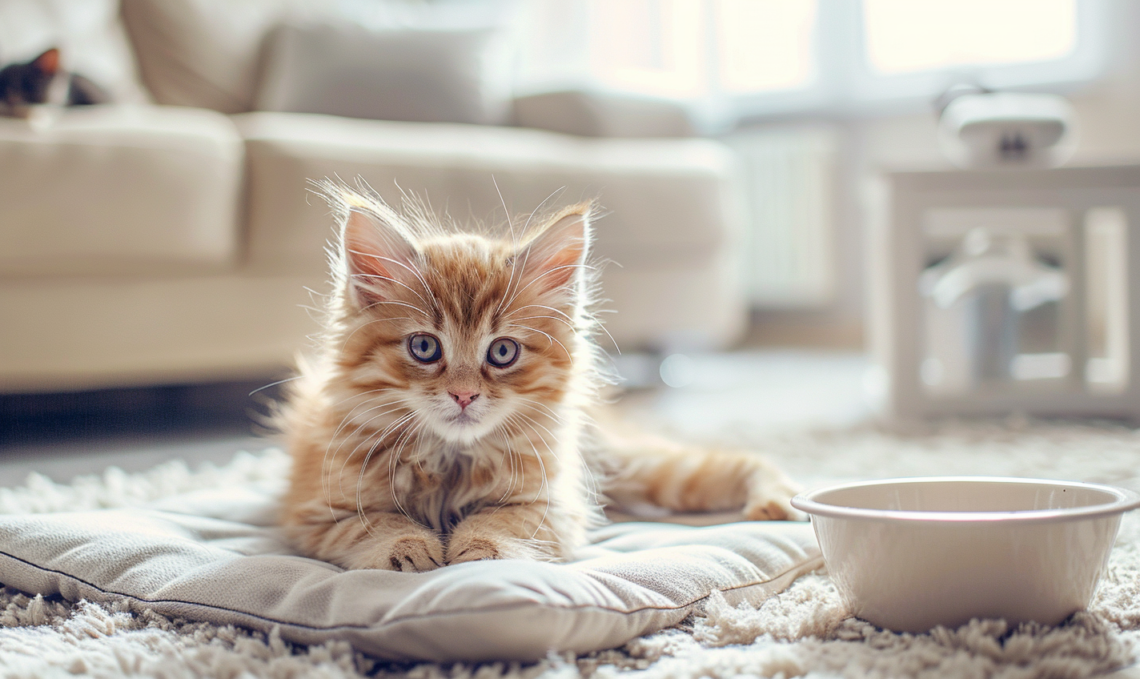
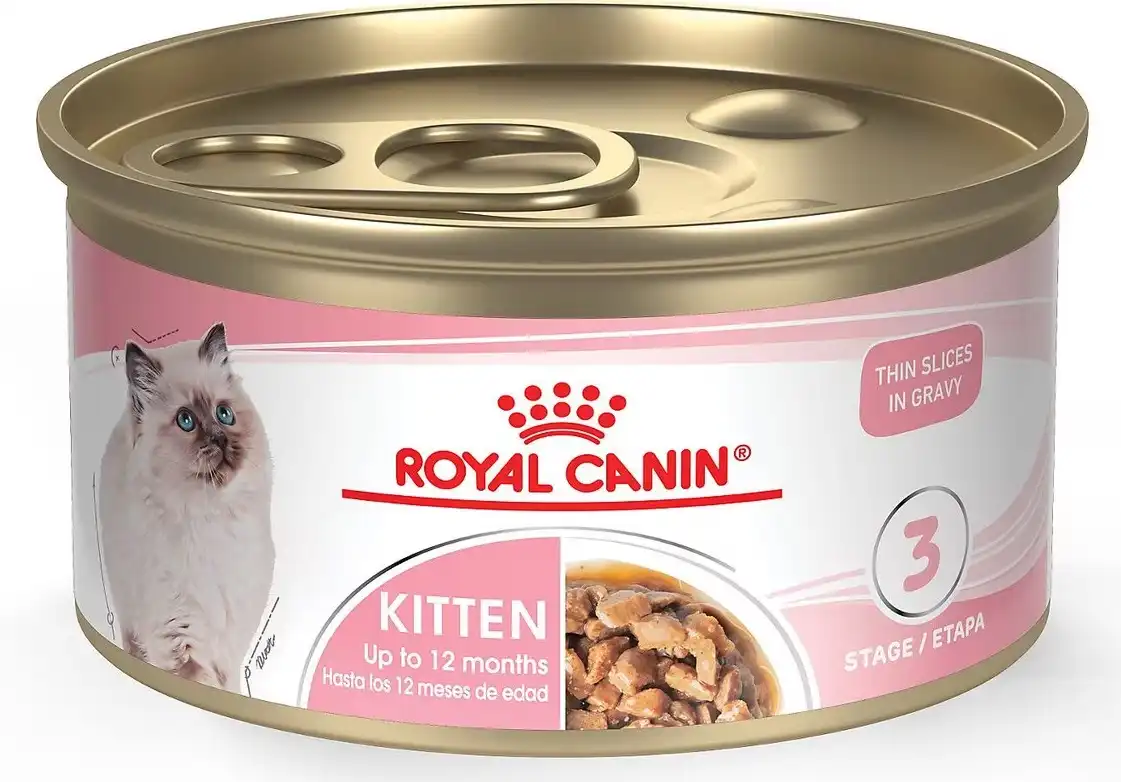
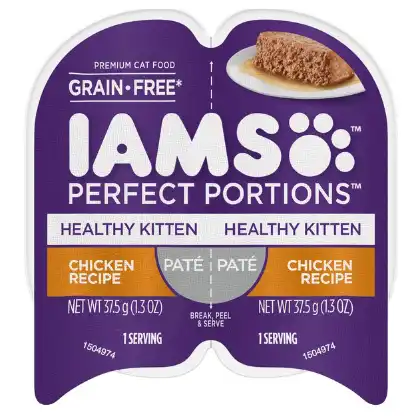











Leave a Comment